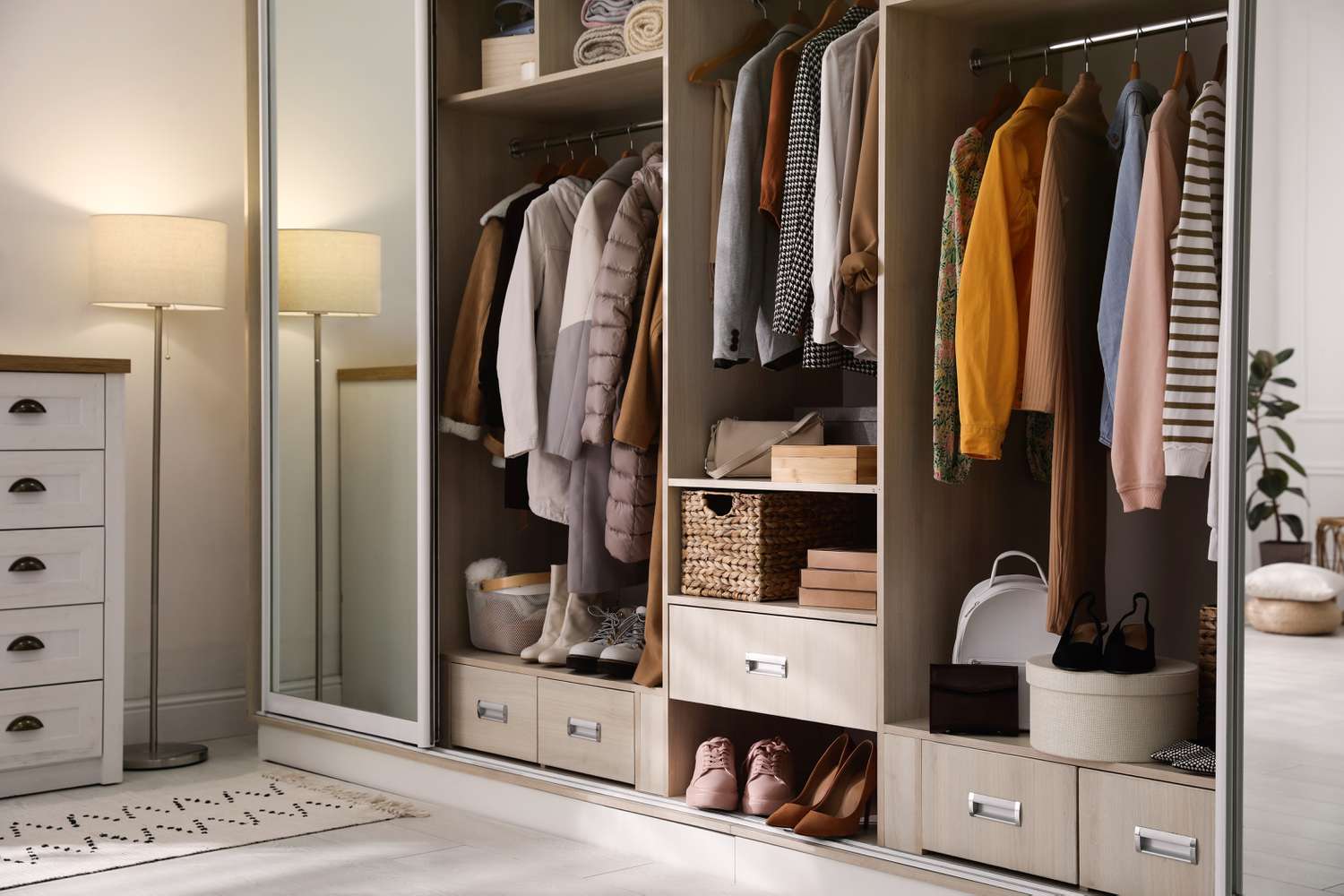
Introduction
A well-organized wardrobe is not only visually appealing but also a practical and time-saving asset. The art of wardrobe organization involves creating a systematic and efficient space that reflects your style, simplifies daily routines, and optimizes the use of available space. This comprehensive guide delves into the intricacies of organizing your wardrobe, covering key principles, step-by-step processes, and tips for maintaining a harmonious and functional closet.
Section 1: Assessing Your Wardrobe
1.1 Take Stock of Your Clothing
Begin the organizational journey by taking stock of your clothing. Empty your entire wardrobe and assess each item individually. This process allows you to evaluate the condition, fit, and relevance of each piece.
1.2 Seasonal Rotation
Consider organizing your wardrobe based on seasons. Separate your clothing into categories for different seasons, making it easier to access appropriate attire when needed. Store off-season clothes in bins or garment bags to free up space.
Section 2: Decluttering and Editing
2.1 The KonMari Method
Embrace the principles of the KonMari method, popularized by Marie Kondo. Evaluate each item by asking whether it sparks joy. If not, consider parting with it. This method encourages mindful ownership and helps reduce clutter.
2.2 The One-Year Rule
If you haven’t worn a particular item in the past year, it may be time to let it go. Be ruthless in editing your wardrobe, keeping only those pieces that align with your current style and lifestyle.
2.3 Donate, Sell, or Repurpose
Create piles for items you plan to donate, sell, or repurpose. Donating gently used clothing contributes to charitable causes, selling items can provide extra income, and repurposing garments extends their life cycle.
Section 3: Creating a Functional Layout
3.1 Categorize Your Clothing
Divide your clothing into categories, such as tops, bottoms, dresses, outerwear, and accessories. Further categorize by type, color, or occasion to streamline the process of finding specific items.
3.2 Utilize Storage Solutions
Invest in storage solutions that maximize your wardrobe space. Use hangers, shelves, bins, and drawers strategically. Consider collapsible or stackable storage solutions to optimize vertical space.
3.3 Hanger Choice
Choose hangers wisely to maintain garment shape and prevent wrinkles. Velvet or padded hangers provide grip and prevent slippage, while slimline hangers save space. Use specialty hangers for items like pants or scarves.
Section 4: Implementing an Effective Folding Technique
4.1 KonMari Folding Method
Apply the KonMari folding method for items like T-shirts, sweaters, and jeans. This method allows you to store items vertically, making it easy to see and access each piece without disturbing the others.
4.2 Uniform Folding
Maintain a uniform folding technique for consistency and aesthetics. Fold items to a standard size, aligning edges and seams neatly. This uniformity not only looks visually appealing but also aids in efficient use of drawer or shelf space.
Section 5: Accessorizing and Shoe Organization
5.1 Accessory Organization
Dedicate specific areas or storage solutions for accessories such as belts, scarves, hats, and jewelry. Hooks, trays, or specialized organizers help keep these items visible and easily accessible.
5.2 Shoe Organization
Organize shoes by type and purpose. Utilize shoe racks, shelves, or clear shoe boxes to keep pairs together and maintain visibility. Consider storing seasonal or infrequently worn shoes in labeled bins.
Section 6: Maintaining Order
6.1 Regular Wardrobe Audits
Schedule regular wardrobe audits to reassess your clothing. This process helps prevent clutter from accumulating and allows you to make intentional choices about new additions or removals.
6.2 Seasonal Swaps
Rotate your wardrobe seasonally to ensure that relevant items are easily accessible. Store off-season clothing separately, and perform a quick audit during seasonal swaps to keep your wardrobe streamlined.
6.3 Consistent Habits
Establish consistent habits for putting away clean laundry, returning items to their designated places, and practicing the one-in-one-out rule when adding new pieces. These habits contribute to maintaining a well-organized wardrobe over time.
Section 7: Style and Aesthetic Considerations
7.1 Curate a Capsule Wardrobe
Consider curating a capsule wardrobe – a collection of versatile, timeless pieces that can be mixed and matched. A capsule wardrobe promotes simplicity, reduces decision fatigue, and encourages mindful consumption.
7.2 Color Coordination
Organize your clothing by color to create a visually pleasing and harmonious display. This makes it easier to locate specific items and adds an aesthetic dimension to your wardrobe.
7.3 Style Zones
Create style zones within your wardrobe based on occasions or functions. This could include sections for work attire, casual wear, formalwear, or workout gear. Style zones enhance efficiency when selecting outfits for specific occasions.
Conclusion
Organizing your wardrobe is a transformative process that extends beyond mere tidiness. A well-organized wardrobe reflects your style, streamlines your daily routine, and fosters a sense of harmony. By following the principles outlined in this comprehensive guide – from decluttering and categorizing to utilizing storage solutions and maintaining consistent habits – you can achieve a wardrobe that is both functional and aesthetically pleasing. The journey to a well-organized wardrobe is a continuous process, and with mindful practices, you can enjoy the benefits of a harmonious and efficient closet for years to come.